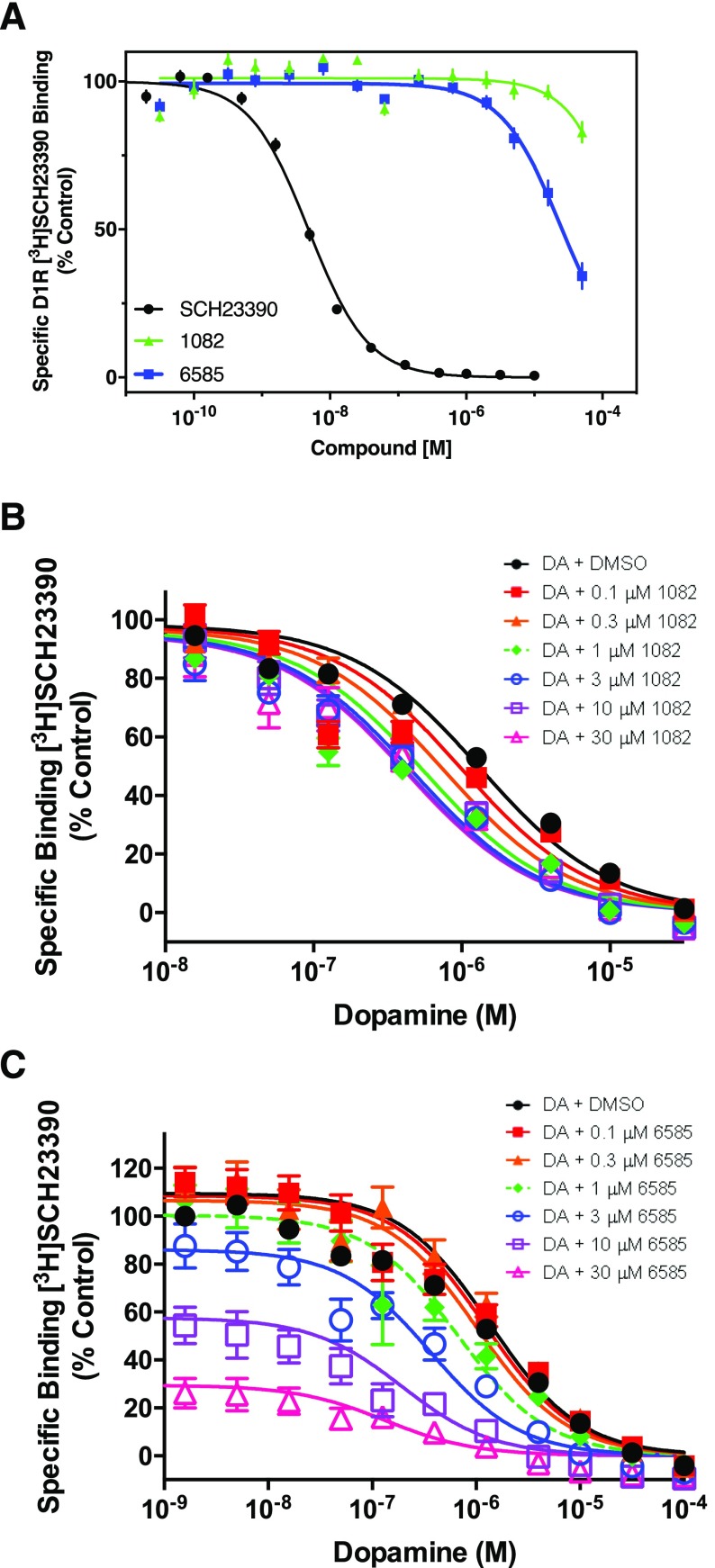Fig. 3.
MLS1082 and MLS6585 increase dopamine affinity as measured using [3H]-SCH23390 binding assays. Data are represented as a percentage of the control specific [3H]-SCH23390 binding in the absence of competitor, mean ± S.E.M., N = 3. (A) MLS1082 decreases [3H]-SCH23390 binding by 17.2% ± 3.4% at the highest concentration tested (50 μM); MLS6585 had a greater effect, decreasing [3H]-SCH23390 binding by 65.8% ± 4.4% at 50 μM. Unlabeled SCH23990 was used a positive control. (B) Increasing concentrations of MLS1082 significantly shifted the dopamine competition curve by ∼3-fold leftward indicating an increase in dopamine affinity in the presence of MLS1082 (Ki [95% CI]; DA Ki = 0.71 μM [0.49–1.2]; + 30 μM MLS1082 = 0.26 μM [0.08–0.84], P = 0.03). (C) Increasing concentrations of MLS6585 significantly shifted the dopamine competition curve ∼7-fold leftward (DA Ki + 30 μM MLS6585 = 0.13 μM [0.04–0.45], P = 0.03. Higher concentrations of MLS6585 reduce [3H]-SCH23390 binding as shown in (A).

